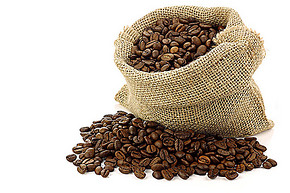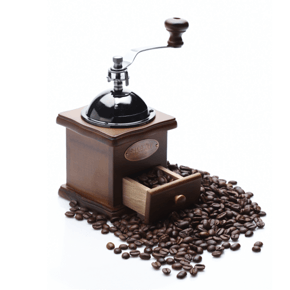Current Situation and Prospect of Coffee Industry in Vietnam
Follow the caf é (Wechat official account vdailycom) and found that Beautiful Cafe opened a small shop of its own.
I. General situation of coffee industry in Vietnam
Since coffee trees were first introduced in 1857, coffee has been grown in Vietnam for 160 years. In recent years, the planting area of coffee in Vietnam has expanded rapidly, and the output has increased significantly, which has led to processing, sales and export, formed a complete industrial chain, and has become an important part of Vietnam's economy. In 2014, the national coffee planting area was about 653000 hectares, an increase of 2.7 percent over the same period last year, 30 times that of 1961. The period from 1986 to 2012 was a period of rapid growth of coffee production in Vietnam, which formed a strong competition with other countries in the field of Robsta coffee varieties in the world. Coffee production in 2013-14 was 30 million bags (60 kg each), or about 1.7 million tons, mainly robusta coffee. Over the past 10 years, Vietnam has exported 1.2 million to 1.5 million tons of coffee a year, with an export value of US $1.7 billion to US $3.6 billion, accounting for 15 percent of total agricultural exports. The specialization of the production of commercial coffee has created jobs for more than 560000 farmers, increased their income, and made great contributions to promoting the economic and social development of Xiyuan, southeastern and other growing areas, and for farmers to shake off poverty and become rich. The output value of coffee in Xiyuan province accounts for 30% of local GDP.

At present, Vietnam has formed a strong coffee bean rough processing and coffee deep processing capacity. Among them, the design capacity of rough processing of coffee beans is 1.5 million tons / year, that of roasting coffee powder is 52000 tons / year, and that of instant coffee is 36500 tons / year. The total production capacity of 11 large-scale coffee processing manufacturers is 140000 tons / year, and the actual capacity is 81.6% of the designed capacity. The storage design capacity of coffee products is 2.36 million tons / year.
The proportion of high value-added roasting and deep processing of instant coffee is increasing. Vietnam Coffee (Vinacafe), Central Plains (Trung Nguyen), Antai (An Thai), Me Trang, Phuong Vy and other major coffee brands have been deeply recognized by consumers, gradually giving full play to the advantages and potential of Vietnamese coffee products. All the special machinery and equipment for coffee processing made in Vietnam have been made in China and exported to other countries.
Vietnamese coffee is very popular in the world. Coffee beans are exported to more than 80 countries and regions. Export volume and export volume show an overall rapid upward trend. Exports account for 14% of the world coffee market share, and exports account for 10.4%, ranking second only to Brazil. From 1991 to 1995, the average annual export volume of coffee was 142000 tons, the average annual export volume was US $210 million, and the average export price was US $1224.5 per ton. from 1996 to 2000, the average annual export volume was 404000 tons, the average annual export value was US $510 million, and the average export price was US $1346 / ton. from 2001 to 2005, the average annual export volume was 814000 tons, the average annual export volume was US $490 million, and the average export price was US $541.6 / ton. From 2006 to 2010, the average annual export volume was 1.114 million tons, the average annual export volume was 1.73 billion US dollars, and the average export price was 1551.4 US dollars per ton; from 2011 to 2012, the average annual export volume was 1.494 million tons, the average annual export volume was 3.21 billion US dollars, and the average export price was 2155.5 US dollars per ton.
According to the USDA, the global instant coffee market rose from $3.65 billion in 2007 to $5.5 billion in 2014, accounting for 14% of global coffee consumption. Vietnam's instant coffee exports rank fifth behind Brazil, Indonesia, Malaysia and India, accounting for 9.1% of the market share. At present, Vietnam has about 150 coffee export enterprises and 3000 agents, of which 13 are foreign-funded enterprises.
II. Prospects of Coffee Industry in Vietnam
The overall goal is: on the basis of ranking second in output and export volume in the world, Viet Nam will double its export and output value, change its growth mode, improve its competitiveness and added value in the direction of modernization and diversification, and steadily achieve economic, social and environmental benefits.
The 2020 target is to control the total area of coffee cultivation at 600000 hectares, the unit yield at 2.7t / ha, the total output at 1.6 million tons / year, and the average output value per hectare at 120 million dong (about 36000 yuan). The proportion of coffee processing has increased from the current 10% to 30%, instant and roasted coffee has reached 25% of the total output, and exports have reached 38-4.2 billion US dollars.
By 2030, the proportion of diversified deep processing of coffee will reach 30% of the output, 40% of the output, a strong Vietnamese coffee brand will be established, the total output value of coffee will be double that of the present, and the export value will reach US $50-6 billion. We will continue to carry out the "Vietnamese give priority to the use of Vietnamese goods" campaign, and the proportion of sales in the domestic market has increased from the current 10% to 30%. Open up potential international markets through multiple channels to create conditions for the sale of high value-added products, especially in China, the European Union and countries that have signed free trade agreements with Vietnam.
Important Notice :
前街咖啡 FrontStreet Coffee has moved to new addredd:
FrontStreet Coffee Address: 315,Donghua East Road,GuangZhou
Tel:020 38364473
- Prev

Introduction of Vietnamese coffee brands, brief introduction of Vietnamese coffee
Follow the caffeine review (Wechat official account vdailycom) found that the beautiful cafe opened a small shop of its own. In order to increase production, Vietnam has switched to robusta coffee, which is twice as caffeinated as Arabica and is now the largest coffee producer in the world. Brewing coffee, raw coffee beans can not be boiled directly need to be roasted, ground into powder, and then used close to boil
- Next

How to taste Vietnamese coffee and the operation of Vietnamese coffee pot
Following Cafe (official Wechat account vdailycom) found that it is not long since the French landed in Vietnam and began a century-long colonial rule that they brought their proudest leisure drink, coffee, to Vietnam, where coffee has taken root ever since. Although the law
Related
- Detailed explanation of Jadeite planting Land in Panamanian Jadeite Manor introduction to the grading system of Jadeite competitive bidding, Red bid, Green bid and Rose Summer
- Story of Coffee planting in Brenka region of Costa Rica Stonehenge Manor anaerobic heavy honey treatment of flavor mouth
- What's on the barrel of Blue Mountain Coffee beans?
- Can American coffee also pull flowers? How to use hot American style to pull out a good-looking pattern?
- Can you make a cold extract with coffee beans? What is the right proportion for cold-extracted coffee formula?
- Indonesian PWN Gold Mandrine Coffee Origin Features Flavor How to Chong? Mandolin coffee is American.
- A brief introduction to the flavor characteristics of Brazilian yellow bourbon coffee beans
- What is the effect of different water quality on the flavor of cold-extracted coffee? What kind of water is best for brewing coffee?
- Why do you think of Rose Summer whenever you mention Panamanian coffee?
- Introduction to the characteristics of authentic blue mountain coffee bean producing areas? What is the CIB Coffee Authority in Jamaica?

